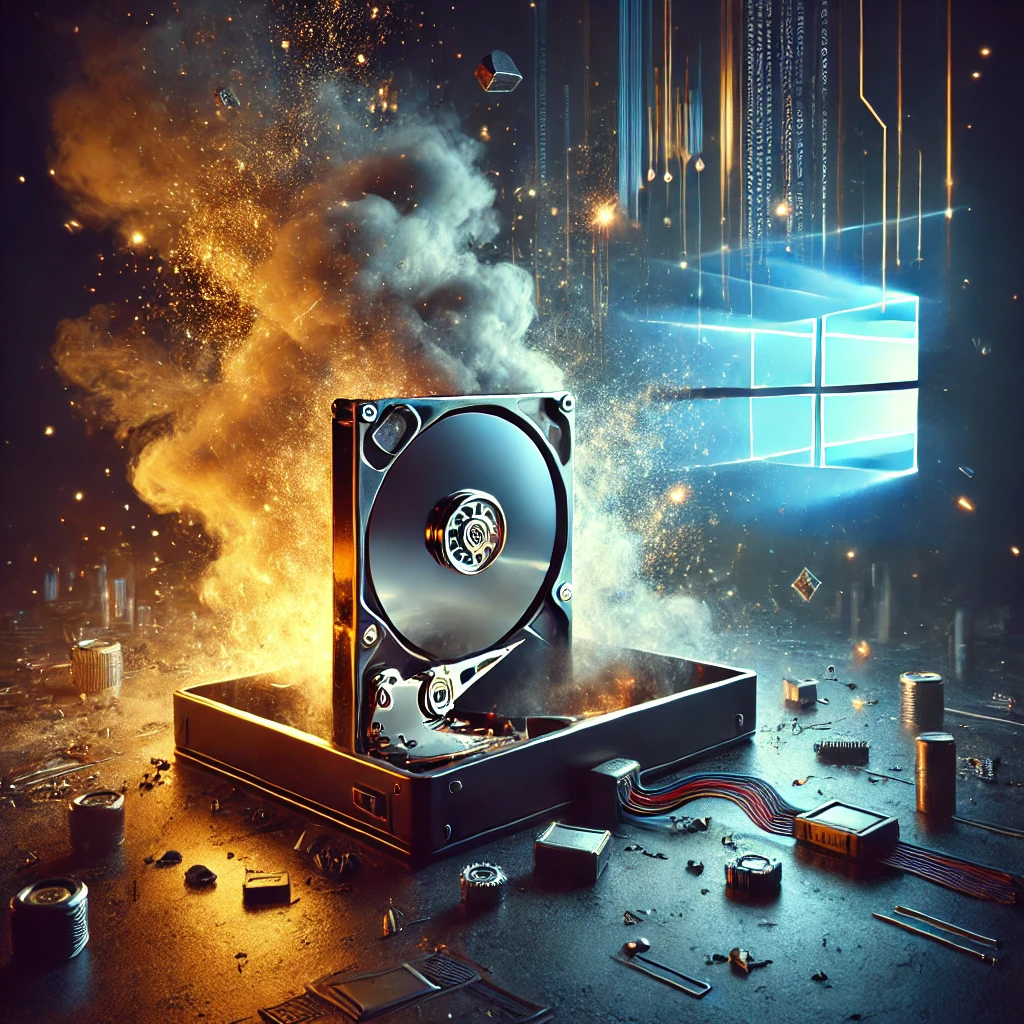Primary PC Fresh Install

Sorry for the horrible AI generated art. I’ll probably replace it eventually.
tl;dr
After difficulties getting the install to work, I managed to get a clean install of Windows 11 working on my primary PC. It has been a little bit since I made any new posts, in part because I’m continuing to work through the OTW-Bandit problems and the Advent of Code problems. The other part is that the hard drive in my primary PC started failing. I did get it replaced, so I decided to tell you a little about the process. (cough cough excuses for the lack of posts cough cough)
The Issues
For a while now, I’ve been having some weird issues with my desktop. Occasionally, it would freeze up and I’d have to force restart it. The last few months, it started happening more frequently. Eventually I got to a point where I couldn’t boot to the Windows desktop at all. So, this is akbout how I got here and how I got it working again.
My old desktop was a small form factor (SFF) build that I built around 2016. Then I built a fairly powerful rack-mount PC in addition to my desktop when I was getting my master’s degree in 2019. I used it as a virtual machine host for various self-hosted services, gaming servers, vulnerable VMs, and other class projects. It had two NVMe drives that were mirrored with ZFS and the VMs were on Proxmox. When my SFF desktop motherboard died a couple of years ago, I pulled out the SSD and graphics card and installed them in the rack-mount PC. When booting directly to Windows 11 on the SSD, it worked just fine (Windows had already updated to 11 when it was still in the SFF PC). However, since I had finished my degree at that time and wasn’t using it actively for VMs, I decided to repurpose the two NVMe drives. I installed Debian on one of them, which worked great. I set it as the boot drive and could use GRUB to boot to Windows 11 on my SSD. I attempted to install Windows 11 on the other, but the install never would finish. After some digging, I learned that my chipset wasn’t compatible with Windows 11 out of the box, it needed drivers. Which is why my SSD was working fine - it already had the drivers it needed, but my installer didn’t have the drivers needed.
The Solution
So for a while, I just left the NVMe installation alone in the partially complete state. The SSD was working fine, so I just used that. The other NVMe drive was just sitting there unused. It did start bothering me when DaVinci Resolve was being slow or transfer speeds of video files were slow. But then when it crashed, I got serious about fixing the unused Windows 11 install. After a few reboots, I was able to get back into Windows on the SSD. So I backed up all the files I needed, and then removed the NVMe drives (I needed the extra space for video editing, so I planned to use both drives for my main system).
I had built a gaming PC for my wife a little after I built the SFF desktop, so my first thought was to try installing my NVMe drive in her computer, but she’s missing TPM 2.0, so she can’t install Windows 11. I reached out to a friend that recently upgraded his desktop hardware and he was willing to let me try using it. So we pulled the drives out of his and put mine in. And the install worked exactly as expected. I was then able to take the drives out and install them back in the rack-mount PC, and they worked perfectly. I haven’t experienced any issues in the couple of months since then.
Potential Alternatives
I think I could have built an installation media that had the appropriate drivers, but I already had the factory installation media, so I just used that. I also could have continued my dual-boot setup with Debian, but I decided the storage for the videos was more important for now. I can always switch it back to Debian if I need to.
Conclusion
I’m glad I was able to get my primary PC working again. Also to be able to write on this blog again. I’ve done plenty of installs and getting Windows working on hardware it isn’t supposed to support for work, but dealing with hardware issues on a personal PC is a different kind of frustration; I don’t have the deployment tools I’m used to. Even though it was a pain, I wish I had done this sooner. Especially for video editing, the drives are significantly faster than the old one.
If you’re not using NVMe drives, you should consider it. Also, if you’ve thought about just wiping your PC and starting fresh, you should do it. Just back up what you need and do it. It’s worth it.